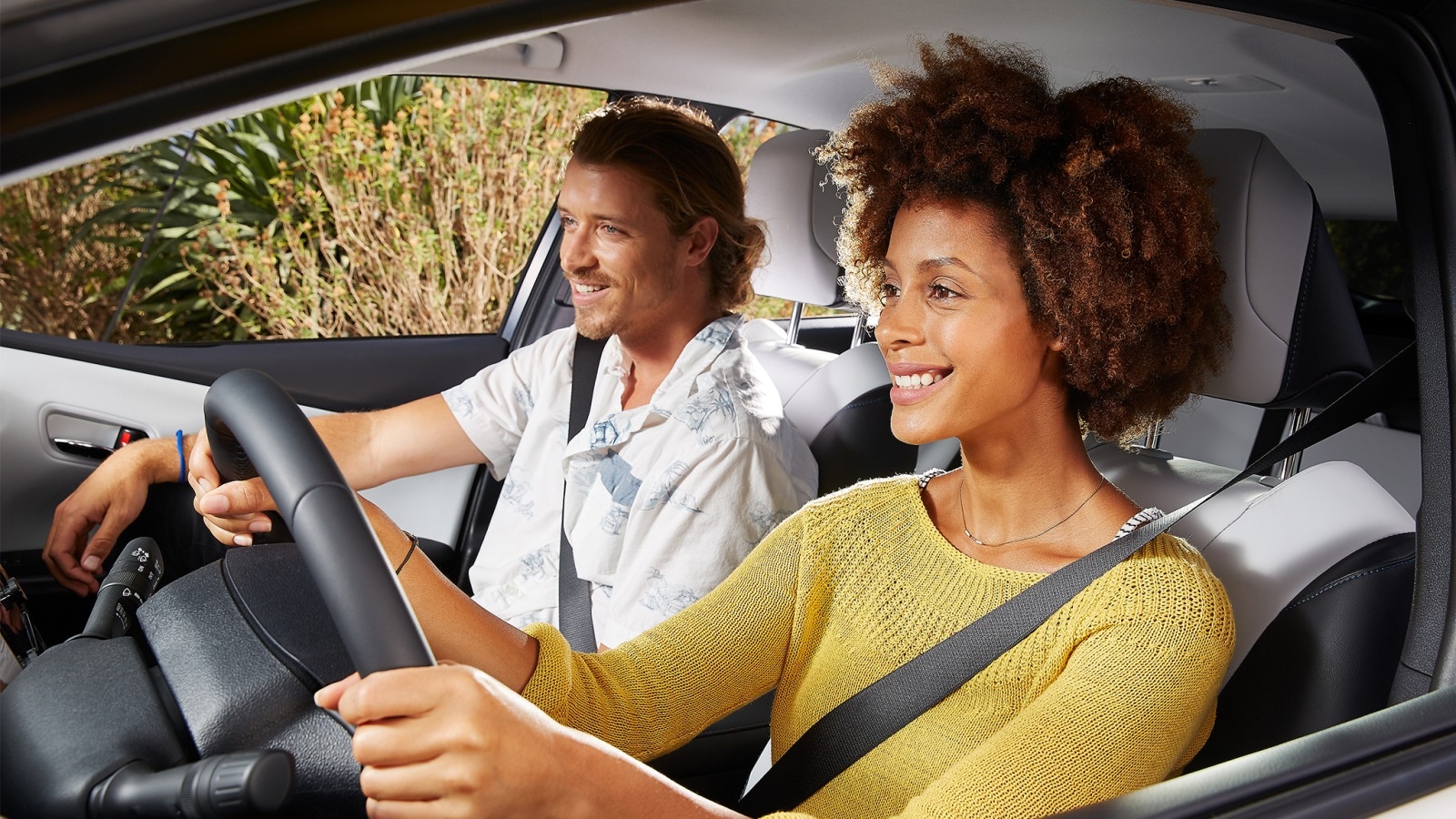Yes, you can test-drive a car without buying it. Car dealerships encourage test drives as part of the purchasing process, and it is an opportunity for potential buyers to experience the vehicle firsthand.
Test-driving a car allows you to assess its performance, comfort, and overall suitability for your needs. It also gives you a chance to evaluate its features and determine whether it meets your expectations. Car dealerships understand that test drives are essential for making an informed decision, and they typically welcome inquiries from individuals interested in trying out a vehicle before committing to a purchase.
Therefore, feel free to schedule a test drive to ensure that the car meets your requirements before making a final decision.

Credit: www.kbb.com
Exploring Test-driving A Car
Exploring Test-Driving a Car allows you to experience a vehicle firsthand before making a purchase decision.
What Is A Test Drive?
A Test Drive is an opportunity for potential buyers to experience the look, feel, and performance of a car firsthand.
Benefits Of Test Driving
- Helps you assess the comfort and ergonomics of the vehicle.
- Allows you to test the handling and performance of the car on the road.
- Enables you to evaluate the technology and features of the vehicle.
- Aids in comparing different models to find the best fit for your needs.

Credit: www.edmunds.com
How To Arrange A Test Drive
When arranging a test drive, simply contact the dealership to schedule a convenient time. You can test-drive a car without any obligation to buy, allowing you to make an informed decision. This process helps you assess the vehicle’s performance and suitability before making a purchase.
Contacting The Dealership
When it comes to arranging a test drive, the first step is to contact the dealership. With smartphones and online directories readily available, finding the contact information of your local dealership is just a few taps away. Give them a call or send an email to express your interest in test driving a specific car model.
Scheduling An Appointment
Once you have reached out to the dealership, the next step is to schedule an appointment for the test drive. It’s important to mention your preferred date and time, so they can accommodate your request. The dealership staff will guide you through the process and provide you with the necessary details.
If you want to make the process even smoother, many dealerships now offer the option to schedule a test drive online. Visit their website, navigate to their test drive section, and follow the simple instructions. You might be required to fill out a form with your contact details and preferred appointment time, then wait for a confirmation email or call from the dealership to finalize the details.
During the scheduling process, keep in mind that weekends and evenings tend to be busier times for dealerships. If you have a flexible schedule, consider requesting a weekday test drive to avoid potential delays.
Pro tip: Some dealerships even offer the convenience of bringing the car to your desired location for the test drive. This can be particularly helpful if you have a busy schedule or prefer to test drive the car in familiar surroundings.
What To Look For During A Test Drive
When test-driving a car without the obligation to buy, it’s crucial to fully assess its performance and comfort. A test drive allows you to experience how the vehicle handles, accelerates, and responds to your commands. It’s a prime opportunity to gauge the car’s comfort and ergonomics, ensuring that it aligns with your preferences and needs. Paying attention to these aspects can help you make an informed decision on whether the car is the right fit for you.
Comfort And Ergonomics
During the test drive, focus on how the seats and interior feel. Consider the placement of controls, visibility of displays, and overall ease of use. Ensure that the seating position, headrest, and steering wheel adjustments can be tailored to your liking for optimal comfort.
Performance And Handling
Assess how the car accelerates, brakes, and maneuvers through various driving conditions. Listen for any unusual noises and vibrations, and pay attention to the responsiveness of the steering and suspension. Additionally, evaluate the visibility, blind spots, and overall driving experience to make an informed decision.
Understanding Test-drive Policies
Insurance Coverage
Before embarking on a test drive, it’s important to verify the insurance coverage provided by the dealership. Most dealerships have insurance that covers test drives, so there is no need for the customer to have their own insurance. It’s essential to confirm this beforehand to avoid any potential complications.
Limitations And Restrictions
Dealerships typically impose certain limitations and restrictions on test drives. These may include:
- Age requirements: Some dealerships may require the driver to be a certain age, typically 21 years or older, to test drive a vehicle.
- Driver’s License: Proof of a valid driver’s license is commonly mandatory to participate in a test drive.
- Time constraints: There may be a limit on the duration of the test drive, such as 30 minutes or an hour.
Understanding these limitations and restrictions ahead of time can help streamline the test-drive process and ensure compliance with dealership policies.
Tips For A Successful Test Drive
Looking for tips for a successful test drive? Yes, you can test drive a car without buying it. Research the car model, inspect the interior and exterior, and make sure to drive on various road types to get a feel for the vehicle’s performance and handling.
When it comes to buying a car, taking a test drive is an essential step in the decision-making process. It’s like trying on clothes before making a purchase: you want to make sure it fits and feels right. But how can you test-drive a car without buying it? Here are some valuable tips to help you make the most out of your test drive experience.
Prepare A List Of Questions
Before heading to the dealership, it’s crucial to prepare a list of questions to ask the salesperson. Having specific questions in mind will not only help you gather the information you need but also show the salesperson that you are a serious buyer. Some questions you could include in your list are:
- What is the fuel efficiency of this model?
- Does it come with any safety features?
- What are the additional costs involved in owning this car?
- Are there any available warranty options?
- Can you provide me with the maintenance history of this particular vehicle?
By asking these questions, you can gain valuable insights into the car’s performance, maintenance requirements, and overall cost of ownership.
Take Notes And Compare Different Models
During the test drive, it’s important to take detailed notes about each car you try out. By jotting down your thoughts and observations, you can evaluate and compare the different models later, helping you make an informed decision. Here are some key factors to consider while test driving:
- Handling and responsiveness: How does the car feel when accelerating, braking, and steering?
- Noise level: Is the cabin quiet or filled with excessive road noise?
- Comfort: Do you feel comfortable in the driver’s seat? Is there sufficient legroom and headroom?
- Technology features: Are the infotainment system and other tech features user-friendly and intuitive?
- Visibility: Can you easily see out of the windows and mirrors?
By taking notes on these aspects, you can compare each car objectively and determine which one best suits your needs and preferences.
Etiquette And Behavior During A Test Drive
Test-driving a car without any intention of buying it is possible. However, etiquette and proper behavior are essential during the test drive to maintain a good relationship with the dealership and ensure a positive experience for all parties involved.
Respecting The Vehicle
Always treat the car with care to show respect during your test drive.
Avoid eating, smoking, or bringing pets in the vehicle.
Avoiding High-risk Driving Behaviors
Drive safely and avoid sudden accelerations or harsh braking.
Do not exceed the speed limits or engage in reckless driving actions.
Dealing With Sales Pressure After A Test Drive
Explore the option to test-drive a car without the pressure to buy, ensuring you make an informed decision. Following a test drive, sales tactics may increase, but remember you have the choice to walk away without obligation. Take your time to find the perfect vehicle that suits your needs and budget.
Navigating Sales Pitches
Once you’ve taken a test drive, be prepared for various sales pitches from the dealer.
Remember, you are in control of your decision to buy or not.
Politely Declining Immediate Offers
If the dealer pressures you to buy immediately, don’t feel obligated.
- Express your appreciation for the offer but firmly decline.
- Take your time and make a decision that is right for you.
It’s important to set boundaries and stick to your own timeline.
Stay confident in your decision-making and don’t hesitate to walk away if needed.
Final Considerations And Decision Making
When considering test-driving a car without purchase, final decisions are pivotal before committing. Explore all options, negotiate terms, and ensure informed choices for a satisfactory outcome. Remember, decisive actions lead to confident resolutions in the car-buying process.
Reflecting On The Experience
After test driving a car without any obligation to buy, it’s important to take a step back and reflect on the experience. This allows you to analyze your feelings, impressions, and thoughts about the vehicle in a more objective manner. Here are a few key points to consider:
- Did the car match your expectations in terms of performance and comfort?
- How did it feel to drive the car? Did it handle well, or were there any issues that concerned you?
- Was the car equipped with the features and technologies that you prioritize?
- Did the car meet your budget and financial considerations?
- What were your initial reactions and overall impression of the car?
By reflecting on these questions, you can gain a clearer understanding of how the test drive influenced your decision-making process.
Comparing Test Drive Experiences
While it’s common for individuals to test drive multiple cars before making a final decision, comparing those experiences is crucial in making an informed choice. Here are a few aspects to consider when comparing test drive experiences:
| Aspect | Car A | Car B | Car C |
|---|---|---|---|
| Performance | Impressive acceleration, responsive handling | Smooth ride, steady handling | Adequate power, average handling |
| Comfort | Spacious interior, supportive seats | Cozy cabin, comfortable seats | Decent space, average seats |
| Features | State-of-the-art technology, advanced safety features | Sufficient features, basic safety options | Basic features, limited safety options |
| Price | A bit expensive, but worth it | Reasonably priced, good value for money | Affordable, but lacking some desired features |
While comparing test drive experiences, it’s important to prioritize the aspects that matter most to you. This will help you determine which car aligns best with your needs, preferences, and budget.

Credit: www.caranddriver.com
Conclusion
To sum it up, test-driving a car without buying it is indeed possible and a smart decision before making such a significant purchase. Not only does it allow you to experience the vehicle firsthand, but it also gives you the opportunity to assess its features, performance, and overall suitability for your needs.
By taking advantage of this opportunity, you can make a well-informed decision and confidently choose the car that is right for you.


